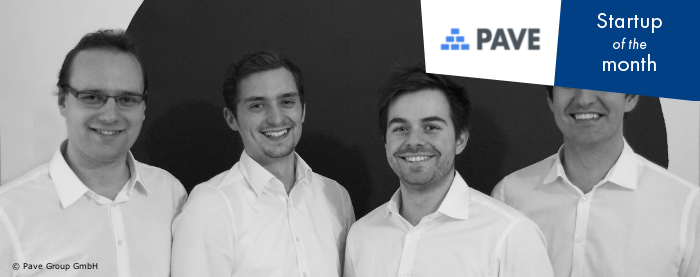PAVE is an AI-based software-as-a-service tool for construction monitoring, issue and task management. This tool is used for construction sites, in existing buildings as well as in the office. PAVE currently reduces overall construction costs by 7%.
ESA BIC Bavaria Manager Cornelia Gebath (CG) interviews Florian Biller (FB), Managing Director at PAVE.
CG: Please give us a sneak peek of your product and the team behind it.
FB: The construction industry requires fundamental change to increase efficiency and construction quality. This is long overdue. Construction today is less efficient than in the 1960s and overall the second least digital sector. While other industries are fully digitised and reach higher efficiency rates each year, building construction and maintenance struggle to move forward due to the persistence of paper-based workflows, a lack of communication between stakeholders, and opaque processes. This led to a situation in which construction companies finish 80% of all projects late, run over budget in 60% of all cases, and fight to find qualified employees.
Our SaaS tool PAVE enables the construction industry to become more efficient and sustainable due to automated construction documentation, task and issue management. In a first step, our customers use our app to access a digital construction model, locate defects, describe them using voice to text and images, and send them directly to subcontractors.
As soon as we have gathered and analysed a sufficient amount of data, we automate the process. This means users just take a picture of an issue and PAVE will automatically add all contextual information and send defect notifications automatically to subcontractors. Aside from this, our detailed database allows us to provide users with remaining time and cost predictions during a project, subcontractor ratings, and much more.
Pave was launched in early 2018 as a spin-off from the Center for Digital Technology and Management (CDTM) by Dr.-Ing. Patrick Christ, Florian Biller, Florian Ettlinger and Sebastian Schlecht. Within our interdisciplinary team, we combine business and technical expertise with theoretical and practical experience in the construction and real estate industry.
CG: What has been your company’s biggest challenge so far?
FB: Besides the operational challenges on the business and technical side, the biggest task for Pave is to educate the construction and real estate industry. As it is one of the oldest and least digital industries, many players do not see value in digital products and standardised processes. Pave tries to change this behaviour by easing processes and enabling customers to improve processes based on insightful data.
CG: Can you explain the three main ingredients of your recipe for success?
FB: Firstly, our customer focus. At PAVE, we always put our customer first and, for example, only start working on new or improving existing functionalities if a certain number of clients sees value in this.
Secondly, our interdisciplinary team. The mix of engineers, computer scientists and business people within the team allows us to take different views into account and enables us to take balanced decisions.
Thirdly, our network. We have been very lucky to be educated at leading academic institutions such as CDTM, TU Munich, the University St. Gallen and Berkeley. The people we met there and the people from ESA BIC very much help us with contacts, feedback and more.
CG: What do you expect from ESA BIC Bavaria and how do you think the initiative and its network will help you to kick-start your business case?
FB: The ESA brand has helped us enormously to gain the trust of customers and partners of all kinds. The funding for travel, conferences and prototyping has also helped us to reach customers and establish key connections. Additionally, we benefit from diverse events such as pitch training and industry meet-ups. After the first few months in the program, we are now also starting to actively look for mentors in the network.
CG: What do you think to benefit from the DLR support?
FB: The construction and real estate industry is all about location, location, location. DLR, on the other hand, is greatly involved in a variety of navigation systems and aerial image analysis that have always been used for location analysis. We are very much looking forward to getting in touch with more DLR experts to further discuss our ideas and how to best use the different kinds of technologies.
CG: Let’s reach for the stars – what is going to happen in PAVE’s future?
FB: Our vision is to create better places. We fulfil this by providing intuitive products to the construction and real-estate industry, which helps to achieve more efficient and sustainable building work. By 2023, we aim to have digitised 100,000 construction projects with PAVE.
Did you enjoy this interview with the outstanding start-up? Anyone interested can get into contact with PAVE via e-mail. Stay tuned for upcoming interviews with ESA BIC Bavaria start-ups’ on our AZO Blog.




